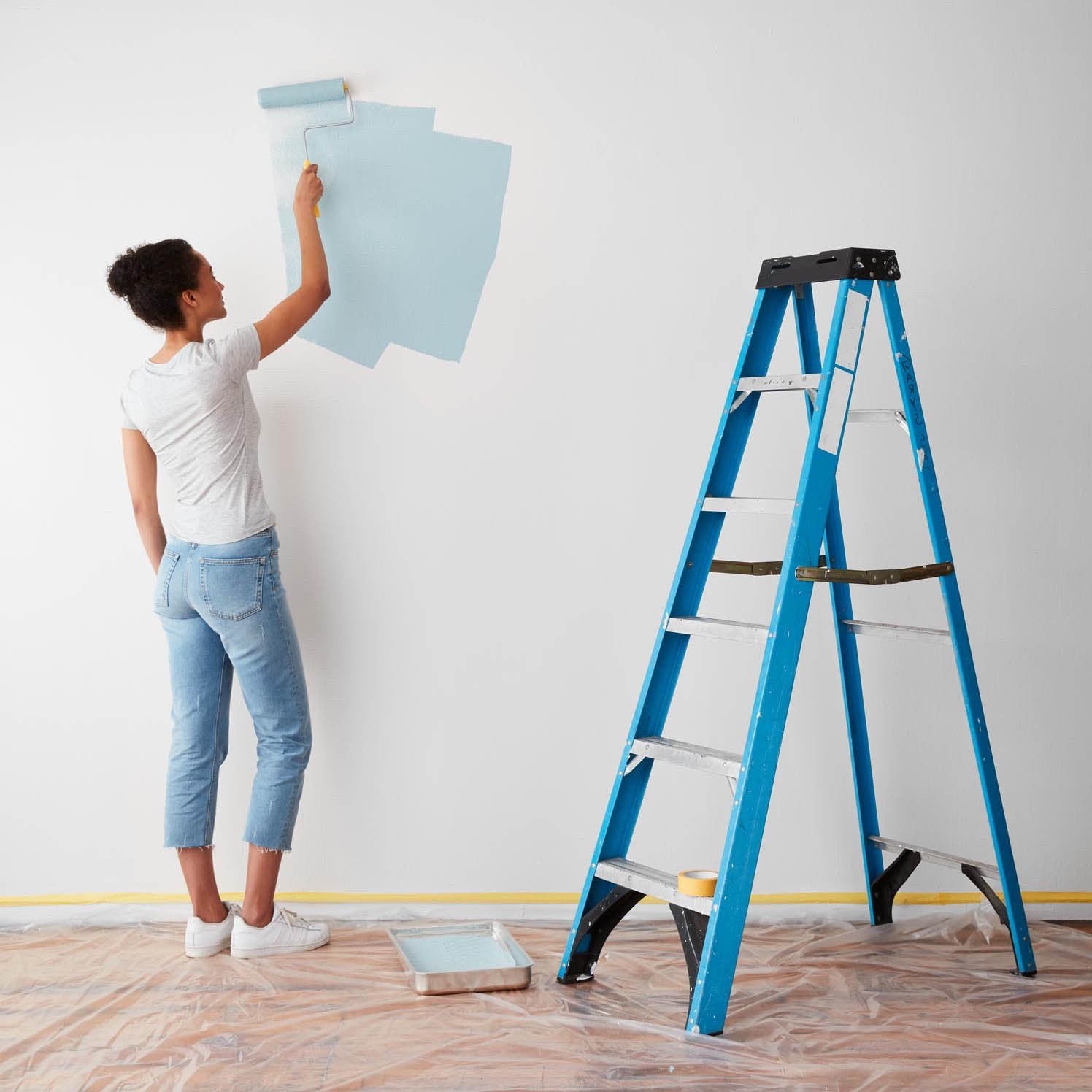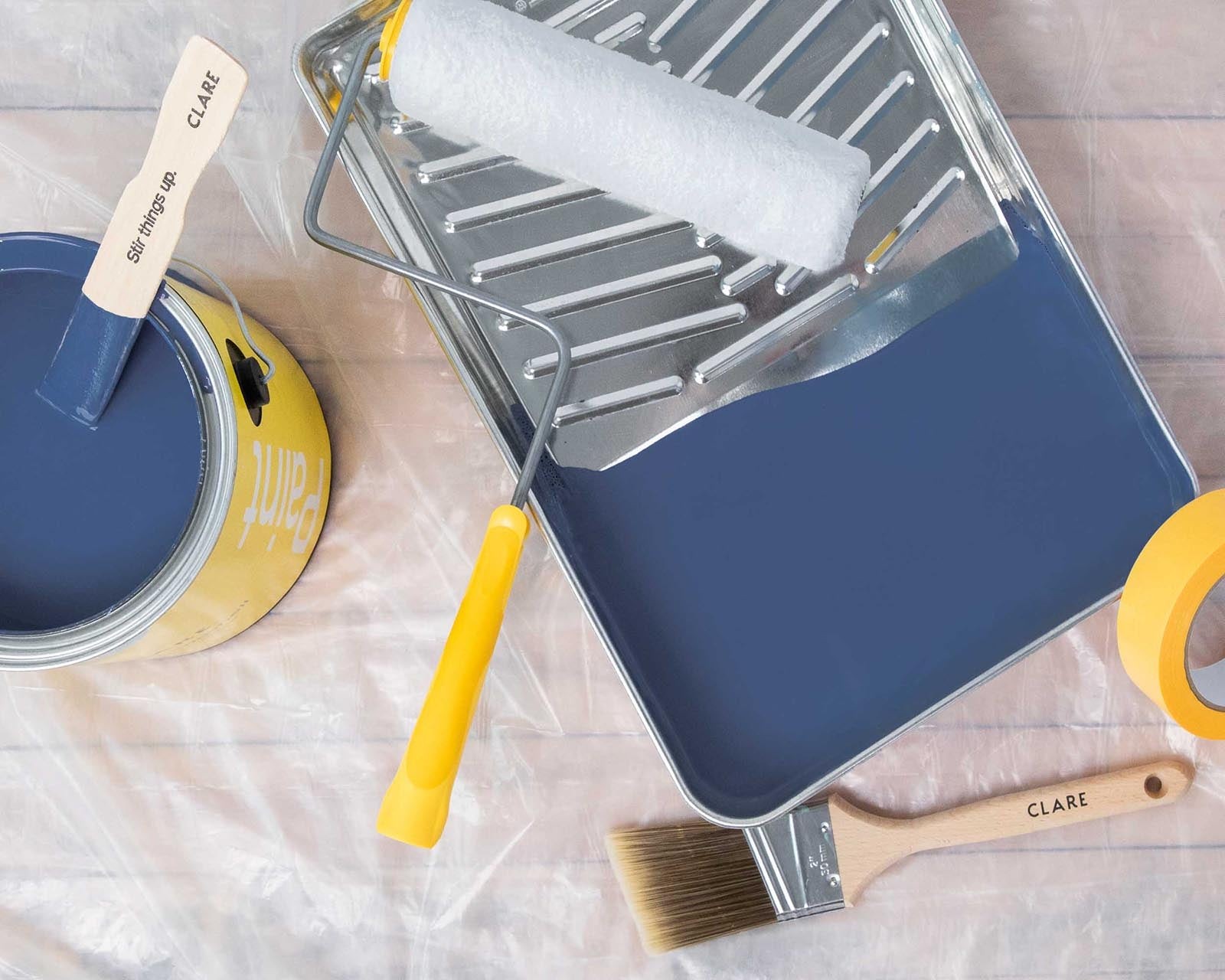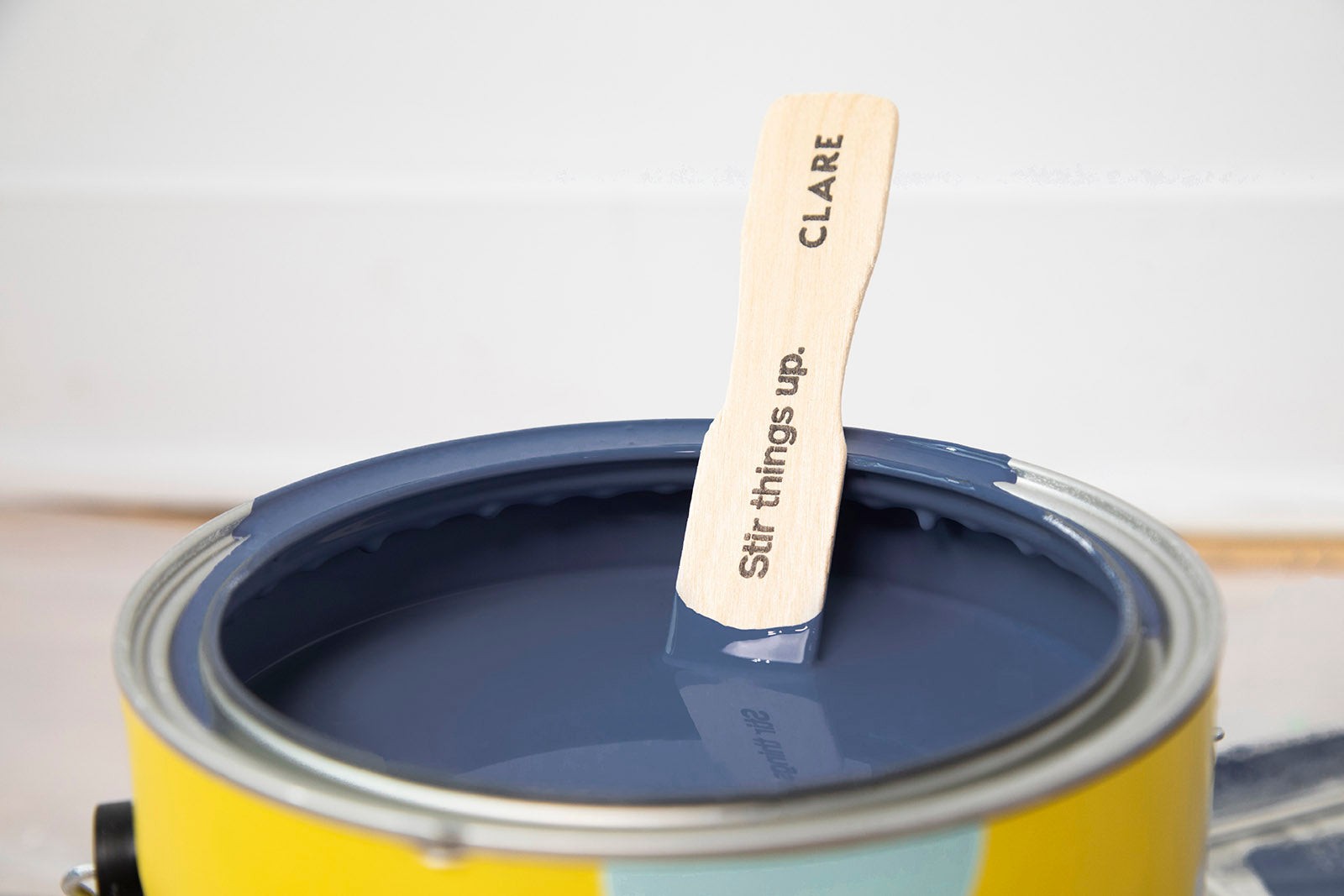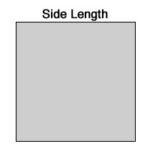Are you planning a painting project and wondering How Much Does A Gallon Of Paint Cover? At HOW.EDU.VN, we understand that accurately estimating paint coverage is crucial for project success, preventing both shortages and wasteful overbuying. A single gallon typically covers about 350 to 400 square feet, but this can vary based on surface texture, porosity, and the paint’s quality. Let’s explore these factors to ensure you get the right amount of paint. Discover effective paint estimation techniques and expert painting tips to achieve the best results.
1. Understanding Paint Coverage Basics
Paint coverage refers to the area that a specific amount of paint can cover effectively. Typically, one gallon of high-quality paint can cover approximately 350 to 400 square feet of a smooth, pre-primed surface. However, this estimate can change based on several factors. Understanding these basics will help you avoid common pitfalls, like running out of paint mid-project or overspending on unnecessary amounts.
1.1. Factors Affecting Paint Coverage
Several factors can influence how much area a gallon of paint will cover. Being aware of these will allow you to adjust your estimates accordingly.
- Surface Texture: Rough or textured surfaces require more paint than smooth surfaces.
- Porosity: Porous surfaces absorb more paint, reducing the coverage area.
- Paint Quality: Higher-quality paints often provide better coverage with fewer coats.
- Color: Changing from a dark to a light color may require additional coats for full coverage.
1.2. General Coverage Guidelines
Here’s a quick reference guide for general paint coverage:
| Surface Type | Coverage per Gallon (Approximate) | Additional Notes |
|---|---|---|
| Smooth Walls | 350-400 sq ft | Pre-primed surfaces |
| Textured Walls | 250-300 sq ft | Stucco, brick, popcorn ceilings |
| Fresh Drywall | 200-250 sq ft | Requires priming; very porous |
| Previously Painted | 300-350 sq ft | Depending on the previous color and paint type |



2. Special Circumstances Affecting Paint Coverage
Certain situations require adjustments to your paint coverage estimates. Knowing how to handle these special circumstances can save you time and money.
2.1. Dramatic Color Changes
When changing from a dark to a light color, you’ll likely need more than one or two coats of paint. Dark colors can be difficult to cover, and the existing color can bleed through lighter shades. Using a primer is highly recommended in these cases.
- Primer: Apply a high-quality primer to create a neutral base.
- Multiple Coats: Be prepared to apply at least three coats of paint.
- Tinted Primer: Consider using a tinted primer that matches the new paint color to improve coverage.
2.2. Painting Fresh Drywall
Fresh drywall is extremely porous and will absorb a significant amount of paint. Proper preparation is essential to achieve a professional finish and avoid wasting paint.
- Priming is Essential: Apply at least two coats of primer specifically designed for drywall.
- Sealing the Surface: Primer seals the drywall, preventing excessive paint absorption.
- Budgeting for Extra Paint: Plan to use more paint than usual due to the drywall’s high porosity.
According to a study by the Drywall Association of North America (DANA) in 2023, priming new drywall can reduce paint consumption by up to 40%.
2.3. Dealing with Textured Walls
Textured walls, such as stucco, brick, or popcorn ceilings, have a larger surface area than smooth walls. This increased surface area requires more paint to ensure adequate coverage.
- Increased Surface Area: Account for the extra surface area when calculating paint needs.
- Spraying Technique: Using a paint sprayer can help reach into all the crevices and provide even coverage.
- Additional Paint: Purchase at least 20% more paint than you would for a smooth surface.
3. Calculating How Much Paint to Buy
Accurately calculating your paint needs is essential to avoid shortages or excessive leftovers. Here’s a step-by-step guide to help you determine the right amount of paint for your project.
3.1. Measuring the Room
Start by measuring the dimensions of the room you plan to paint. Accurate measurements are crucial for an accurate paint estimate.
- Measure Wall Width: Measure the width of each wall in feet.
- Measure Wall Height: Measure the height of the walls from floor to ceiling.
- Calculate Wall Area: Multiply the width by the height for each wall to get the square footage.
3.2. Accounting for Windows and Doors
Subtract the square footage of windows, doors, and other unpainted areas from the total wall area to get a more precise estimate.
- Measure Windows and Doors: Measure the width and height of each window and door.
- Calculate Area: Multiply the width by the height to find the square footage of each opening.
- Subtract from Total: Subtract the total square footage of the openings from the total wall area.
3.3. Calculating Paint Needs
Once you have the total square footage to be painted, you can calculate the amount of paint needed based on the coverage rate of your chosen paint.
- Determine Coverage Rate: Check the paint can for the manufacturer’s recommended coverage rate (usually 350-400 sq ft per gallon).
- Calculate Gallons Needed: Divide the total square footage by the coverage rate to determine how many gallons you need for one coat.
- Account for Multiple Coats: Multiply the number of gallons needed for one coat by the number of coats you plan to apply.
For example, if you have a room with a total paintable area of 1200 square feet and the paint covers 400 square feet per gallon, you would need 3 gallons for one coat and 6 gallons for two coats.
3.4. Using a Paint Calculator
For those who prefer a quicker and easier method, a paint calculator can be a valuable tool. These calculators take the guesswork out of estimating paint needs.
- Online Calculators: Numerous online paint calculators are available.
- Mobile Apps: Some paint companies offer mobile apps with built-in calculators.
- Input Measurements: Simply enter the room dimensions, number of coats, and other relevant details to get an instant estimate.
4. Choosing the Right Type of Paint
Selecting the right type of paint is just as important as calculating the quantity needed. Different paints have different properties and are suitable for different surfaces and purposes.
4.1. Types of Paint
- Latex Paint: Water-based paint that is easy to clean, low in VOCs, and suitable for most interior walls.
- Oil-Based Paint: Durable and provides a smooth finish, but requires solvents for cleanup and has higher VOCs. Best for trims and areas needing high durability.
- Acrylic Paint: Versatile and can be used on both interior and exterior surfaces. Offers good adhesion and durability.
- Specialty Paints: Include paints for specific purposes, such as mildew-resistant paint for bathrooms or chalkboard paint for creating a chalkboard surface.
4.2. Paint Finishes
- Matte: Provides a non-reflective finish that hides imperfections well. Ideal for low-traffic areas and ceilings.
- Eggshell: Offers a slightly more reflective finish than matte, with better durability. Suitable for living rooms and bedrooms.
- Satin: Provides a smooth, velvety finish that is easy to clean. Great for kitchens, bathrooms, and children’s rooms.
- Semi-Gloss: A durable and easy-to-clean finish that is ideal for trims, doors, and areas prone to moisture.
- Gloss: The most reflective and durable finish, often used for cabinets and high-traffic areas.
4.3. Considering Paint Quality
Investing in high-quality paint can save you time and money in the long run. Higher-quality paints offer better coverage, durability, and color retention.
- Coverage: High-quality paints often require fewer coats, reducing the amount of paint needed.
- Durability: Better paints are more resistant to scratches, stains, and fading.
- Longevity: High-quality paints maintain their color and finish longer, reducing the need for frequent repainting.
According to a 2024 report by Consumer Reports, high-quality paints can last up to 10 years without needing to be repainted, compared to 3-5 years for lower-quality paints.
5. Preparing the Surface for Painting
Proper surface preparation is essential for achieving a professional-looking paint job and ensuring the paint adheres correctly.
5.1. Cleaning the Walls
- Remove Dust and Dirt: Use a damp cloth or sponge to wipe down the walls.
- Wash with Soap and Water: For greasy or stained areas, use a mild detergent and water.
- Rinse Thoroughly: Rinse the walls with clean water and allow them to dry completely.
5.2. Repairing Damage
- Fill Holes and Cracks: Use spackle or joint compound to fill any holes or cracks in the walls.
- Sand Smooth: Once the filler is dry, sand it smooth with fine-grit sandpaper.
- Prime Repaired Areas: Apply primer to the repaired areas to ensure uniform paint adhesion.
5.3. Priming the Surface
- Choose the Right Primer: Select a primer that is appropriate for the surface you are painting.
- Apply Evenly: Apply the primer in a thin, even coat using a brush, roller, or sprayer.
- Allow to Dry: Allow the primer to dry completely before applying the paint.
6. Painting Techniques for Optimal Coverage
Using the right painting techniques can help you achieve optimal coverage and a professional finish.
6.1. Cutting In
- Use a Brush: Use a high-quality angled brush for cutting in along edges and corners.
- Apply a Thin Bead: Apply a thin, even bead of paint along the edge.
- Feather the Edges: Feather the edges of the paint to blend seamlessly with the rest of the wall.
6.2. Rolling the Walls
- Use a Roller: Use a high-quality roller with the appropriate nap length for the surface.
- Load the Roller: Load the roller evenly with paint, avoiding drips and splatters.
- Apply in a W Pattern: Apply the paint to the wall in a W pattern, overlapping each stroke.
6.3. Avoiding Common Mistakes
- Don’t Overload the Brush or Roller: Overloading can lead to drips and uneven coverage.
- Maintain a Wet Edge: Keep a wet edge to avoid lap marks and ensure a smooth finish.
- Work in Sections: Work in manageable sections to prevent the paint from drying before you can blend it.
7. Tips for Achieving the Best Results
Follow these additional tips to ensure your painting project is a success.
7.1. Choosing the Right Tools
- High-Quality Brushes and Rollers: Invest in high-quality brushes and rollers for a smoother finish and better coverage.
- Painter’s Tape: Use painter’s tape to protect trim, windows, and other surfaces from paint.
- Drop Cloths: Use drop cloths to protect your floors and furniture from drips and splatters.
7.2. Working in Good Lighting
- Natural Light: If possible, work in natural light to better see the true color and coverage of the paint.
- Artificial Lighting: If natural light is not available, use bright, consistent artificial lighting.
- Inspect for Missed Spots: Regularly inspect the walls for missed spots or areas with uneven coverage.
7.3. Allowing Proper Drying Time
- Follow Manufacturer’s Instructions: Allow the paint to dry completely according to the manufacturer’s instructions.
- Avoid Rushing: Avoid rushing the drying process, as this can lead to peeling, cracking, or other problems.
- Ventilate the Room: Ventilate the room to speed up the drying process and reduce odors.
8. Understanding VOCs and Low-VOC Paints
Volatile Organic Compounds (VOCs) are chemicals released into the air as paint dries. They can be harmful to your health and the environment. Low-VOC paints are a healthier and more eco-friendly alternative.
8.1. What are VOCs?
- Chemical Compounds: VOCs are organic chemical compounds that evaporate at room temperature.
- Health Effects: Exposure to VOCs can cause headaches, dizziness, respiratory problems, and other health issues.
- Environmental Impact: VOCs contribute to air pollution and can harm the environment.
8.2. Benefits of Low-VOC Paints
- Healthier Air Quality: Low-VOC paints release fewer harmful chemicals into the air.
- Reduced Odor: Low-VOC paints have less of a strong, chemical odor.
- Eco-Friendly: Low-VOC paints are better for the environment.
8.3. Identifying Low-VOC Paints
- Check the Label: Look for paints labeled as “low-VOC” or “zero-VOC.”
- Certification: Look for certifications from organizations such as Green Seal or GREENGUARD.
- Research Brands: Research paint brands that are committed to producing eco-friendly products.
9. Maximizing Paint Efficiency
Getting the most out of your paint not only saves money but also reduces waste. Here are strategies to maximize paint efficiency.
9.1. Storing Paint Properly
- Seal the Can: Ensure the paint can is tightly sealed after each use.
- Store Upside Down: Store the can upside down to create an airtight seal.
- Cool, Dry Place: Store paint in a cool, dry place away from direct sunlight and extreme temperatures.
9.2. Using Leftover Paint
- Touch-Ups: Use leftover paint for touch-ups to cover scratches or stains.
- Small Projects: Use leftover paint for small craft projects or to paint furniture.
- Donate or Recycle: If you have a significant amount of leftover paint, consider donating it to a local charity or recycling it at a hazardous waste disposal facility.
9.3. Avoiding Waste
- Accurate Estimates: Calculate your paint needs accurately to avoid overbuying.
- Use All the Paint: Use all the paint in the can before disposing of it.
- Proper Disposal: Dispose of empty paint cans and leftover paint properly according to local regulations.
10. Common Mistakes to Avoid
Even experienced painters can make mistakes. Here are some common pitfalls to avoid for a flawless finish.
10.1. Skipping Surface Preparation
- Importance of Prep: Surface preparation is essential for proper paint adhesion and a smooth finish.
- Consequences of Skipping: Skipping prep can lead to peeling, cracking, and uneven coverage.
- Take the Time: Take the time to clean, repair, and prime the surface before painting.
10.2. Using the Wrong Tools
- Right Tools for the Job: Using the wrong brushes, rollers, or tape can lead to poor results.
- Invest in Quality: Invest in high-quality tools for a smoother finish and better coverage.
- Match Nap Length: Choose the appropriate roller nap length for the surface texture.
10.3. Applying Paint Too Thickly
- Thin, Even Coats: Apply paint in thin, even coats to avoid drips, runs, and uneven coverage.
- Multiple Coats: Multiple thin coats are better than one thick coat.
- Allow Drying Time: Allow each coat to dry completely before applying the next one.
11. Environmental Considerations
Painting can have an impact on the environment. Here are ways to minimize your environmental footprint.
11.1. Choosing Eco-Friendly Paints
- Low-VOC Paints: Choose low-VOC or zero-VOC paints to reduce harmful emissions.
- Recycled Content: Look for paints made with recycled content.
- Sustainable Brands: Support paint brands that are committed to sustainability.
11.2. Proper Disposal Methods
- Recycle Paint: Recycle leftover paint at a hazardous waste disposal facility.
- Dry Out Paint: Dry out small amounts of leftover paint and dispose of it in the trash.
- Donate Paint: Donate usable leftover paint to a local charity or organization.
11.3. Reducing Waste
- Accurate Estimates: Calculate paint needs accurately to avoid overbuying.
- Use All the Paint: Use all the paint in the can before disposing of it.
- Proper Storage: Store paint properly to extend its shelf life.
12. Staying Updated with Painting Trends
The world of painting is always evolving. Staying updated with the latest trends can help you make informed choices for your projects.
12.1. Current Color Trends
- Neutral Colors: Timeless and versatile, neutral colors like gray, beige, and white are always popular.
- Bold Accents: Incorporate bold accent colors to add personality and visual interest.
- Earthy Tones: Earthy tones like green, brown, and terracotta are gaining popularity for their calming and natural feel.
12.2. New Paint Technologies
- Self-Priming Paints: Paints with built-in primer save time and effort.
- Stain-Resistant Paints: Paints that resist stains and are easy to clean.
- Antimicrobial Paints: Paints that inhibit the growth of mold and bacteria, ideal for bathrooms and kitchens.
12.3. Sustainable Practices
- Eco-Friendly Products: An increasing focus on eco-friendly paints and sustainable painting practices.
- Green Certifications: Look for paints with green certifications such as LEED or Green Seal.
- Waste Reduction: Efforts to reduce waste through accurate estimates, proper storage, and recycling.
13. Advanced Techniques for Special Finishes
For those looking to add a unique touch to their walls, advanced painting techniques can create special finishes that transform any space.
13.1. Faux Finishes
- Rag Rolling: Creates a textured, layered look using a rag to apply and remove paint.
- Sponging: Uses a sponge to create a soft, mottled effect.
- Color Washing: Involves applying a thin, translucent layer of paint over a base coat for a textured, antique look.
13.2. Stenciling
- Creating Patterns: Use stencils to create intricate patterns and designs on walls.
- Precise Application: Requires precise application to avoid bleeding and ensure clean lines.
- Custom Designs: Can be customized to match any decor style.
13.3. Texture Painting
- Adding Dimension: Use texture additives to create three-dimensional effects on walls.
- Variety of Textures: Options include sand, beads, and other materials to achieve different textures.
- Unique Look: Creates a unique and tactile surface.
14. Cost-Effective Painting Strategies
Painting doesn’t have to break the bank. Here are some cost-effective strategies to save money on your next project.
14.1. DIY vs. Professional Painting
- DIY Savings: Doing the painting yourself can save on labor costs.
- Professional Quality: Hiring professionals ensures a high-quality finish and saves time.
- Consider Scope: Consider the scope of the project and your skill level when deciding whether to DIY or hire a professional.
14.2. Buying Paint on Sale
- Watch for Sales: Keep an eye out for sales and discounts on paint.
- Clearance Sections: Check clearance sections for discounted paints.
- Bulk Purchases: Buy paint in bulk to save money on larger projects.
14.3. Comparing Paint Prices
- Shop Around: Compare prices from different retailers to find the best deals.
- Online Retailers: Check online retailers for competitive pricing.
- Consider Quality: Consider the quality of the paint when comparing prices, as cheaper paints may require more coats.
15. Innovations in Paint Technology
The paint industry is constantly innovating, with new technologies emerging to improve performance, sustainability, and ease of use.
15.1. Self-Cleaning Paints
- Dirt Resistance: Self-cleaning paints repel dirt and stains, keeping walls looking fresh.
- Easy Maintenance: Reduces the need for frequent cleaning.
- Exterior Applications: Ideal for exterior surfaces exposed to the elements.
15.2. Color-Changing Paints
- Dynamic Colors: Paints that change color based on temperature or light.
- Customizable Options: Offers customizable and dynamic color schemes.
- Innovative Designs: Used for innovative and eye-catching designs.
15.3. Air-Purifying Paints
- VOC Absorption: Paints that absorb and neutralize VOCs in the air.
- Improved Air Quality: Enhances indoor air quality.
- Health Benefits: Promotes a healthier living environment.
Navigating the world of paint coverage can be complex, but with the right knowledge and tools, you can achieve a professional finish and avoid common pitfalls. Remember to consider surface texture, porosity, paint quality, and any special circumstances that may affect coverage. By following these guidelines, you’ll be well-equipped to tackle your next painting project with confidence.
Are you looking for expert advice to ensure your next painting project is a success? At HOW.EDU.VN, our team of over 100 renowned PhDs are ready to provide personalized guidance. Whether you’re struggling with estimating paint coverage, choosing the right type of paint, or tackling a challenging surface, our experts can help. We understand the challenges clients face in finding reliable and expert advice, which is why we’ve created a platform where you can connect directly with top professionals from around the world.
Don’t let uncertainty ruin your painting project. Contact us today to get the expert advice you need. Visit our website at HOW.EDU.VN, call us at +1 (310) 555-1212, or stop by our office at 456 Expertise Plaza, Consult City, CA 90210, United States. Let HOW.EDU.VN help you transform your space with confidence and ease.
Frequently Asked Questions (FAQs)
-
How much area does a gallon of paint typically cover?
A gallon of paint typically covers between 350 to 400 square feet, depending on the surface and paint quality.
-
What factors affect paint coverage?
Factors include surface texture, porosity, paint quality, and color changes.
-
How do I calculate how much paint I need?
Measure the wall area, subtract the area of windows and doors, and divide by the paint’s coverage rate.
-
What is the best type of paint for interior walls?
Latex paint is generally best for interior walls due to its low VOCs and ease of cleaning.
-
Why is priming important before painting?
Priming seals the surface, improves paint adhesion, and ensures uniform color coverage.
-
What are VOCs, and why should I choose low-VOC paints?
VOCs are volatile organic compounds that can be harmful. Low-VOC paints are healthier and better for the environment.
-
How can I store leftover paint properly?
Seal the can tightly, store it upside down in a cool, dry place, and away from direct sunlight.
-
What are some common mistakes to avoid when painting?
Skipping surface preparation, using the wrong tools, and applying paint too thickly are common mistakes.
-
How can I maximize paint efficiency?
Estimate accurately, use all the paint, store it properly, and recycle or donate leftover paint.
-
Where can I get expert advice on painting projects?
Visit how.edu.vn to connect with over 100 renowned PhDs for personalized guidance on any painting-related questions.
